Introduction #
Tamriel beckons again. No, not the fabled The Elder Scrolls VI. This time, Tamriel beckons in board game form. The Elder Scrolls: Betrayal of the Second Era (BOTSE) promises a sprawling, open-world adventure where you can live out your The Elder Scrolls fantasy–without having to download another mod for The Elder Scrolls V: Skyrim. But does it deliver on that promise, especially for solo players? Well, yes. And no. I’ve spent hours trekking across Tamriel, slashing through Daedra, sweet-talking (or sweet-rolling?) my way out of conflicts, and obsessing over character builds that would make even a min-maxing Dwemer envy. So grab your Septims, replenish your Magicka, and let’s dive into this solo adventure.
Overview #
The Elder Scrolls: Betrayal of the Second Era (BOTSE) is a cooperative adventure game set in the rich and diverse continent of Tamriel from The Elder Scrolls video game franchise. You and up to three other players take on the roles of adventurers, contracted as agents of a specific guild within one of Tamriel’s provinces.
The story begins during the Three Banners War, a bloody conflict for control of the Ruby Throne. Amidst this chaos, the Order of the Black Worm, a necromantic cult, plots to bind Tamriel to the Daedric plane of Coldharbour, while a Wood Elf schemes to reshape Tamriel. The adventurers must journey across provinces like Morrowind, battle enemies, explore to complete quests and advance their characters, and–hopefully–avoid getting eaten by a Troll.
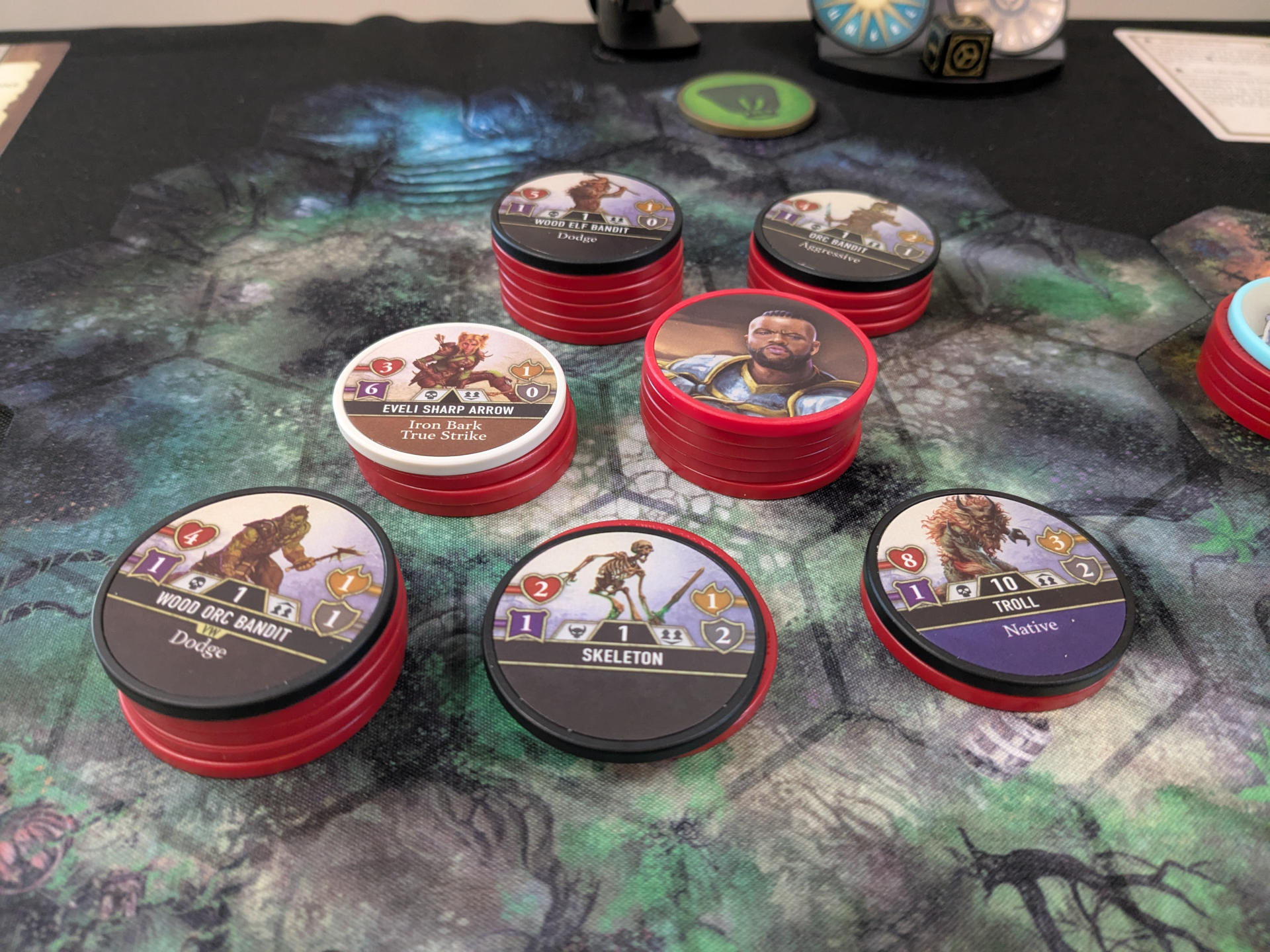
The game is designed as a campaign played across three sessions, with each session spanning multiple in-game days. Gameplay involves a series of phases within each game day: New Day, Overland (traveling the map), Encounter (quests, battles, or interactions), Reward (leveling up), and End of Day (where you pray to the Divines for a nap).
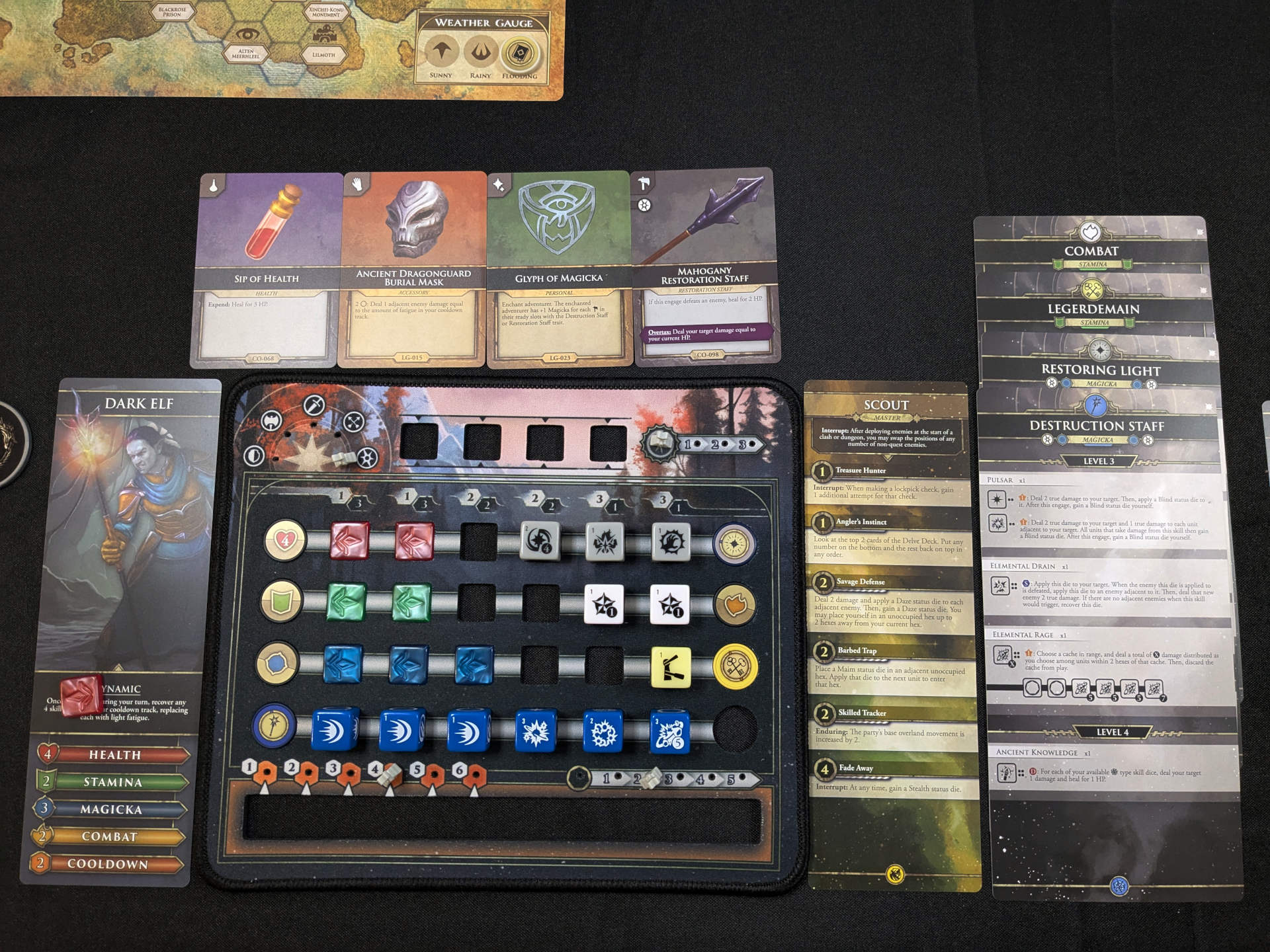
Encounters can lead to peaceful resolutions or battles. The latter takes place on hex-based battle maps using different modes like clashes, delves, or dungeons. Your character evolves over time through experience points (XP), which let you develop new skills and refine your combat style. The ultimate goal is to finish the campaign with a grand endgame session, where you’ll face off against a shadowy threat to Tamriel.
Gameplay #
Diving into the gameplay of The Elder Scrolls: Betrayal of the Second Era is a bit like embarking on an epic quest in its own right–with plenty of twists, turns, and a few pitfalls along the way. BOTSE is an open-world, sandbox adventure that gives you a lot of freedom. You’re not just running from Point A to Point B in a linear storyline–you’re making choices that impact how your adventure unfolds. And that’s fantastic. But also? It takes forever.
While I appreciate the sandbox vibe, the faithfulness to the video games, and the sense of exploration it fosters, I couldn’t help but feel that each guild quest could have been trimmed down a bit or split into more sessions per campaign. A single session can easily stretch past the three-hour mark, especially if you’re still learning the rules. The very first game took me about 8 hours as my eyes constantly glanced back and forth between the game and the rulebook at every step. Things got better as I started to internalize the rules, but it was a very rough first impression. After about three hours into a session, I found myself yearning for the simplicity of a peaceful encounter rather than setting up yet another battle.
Setting aside the grueling session length, there’s a lot to love about BOTSE. It’s comprised of several systems that integrate well together like fine ingredients harmonizing into a gourmet dish.
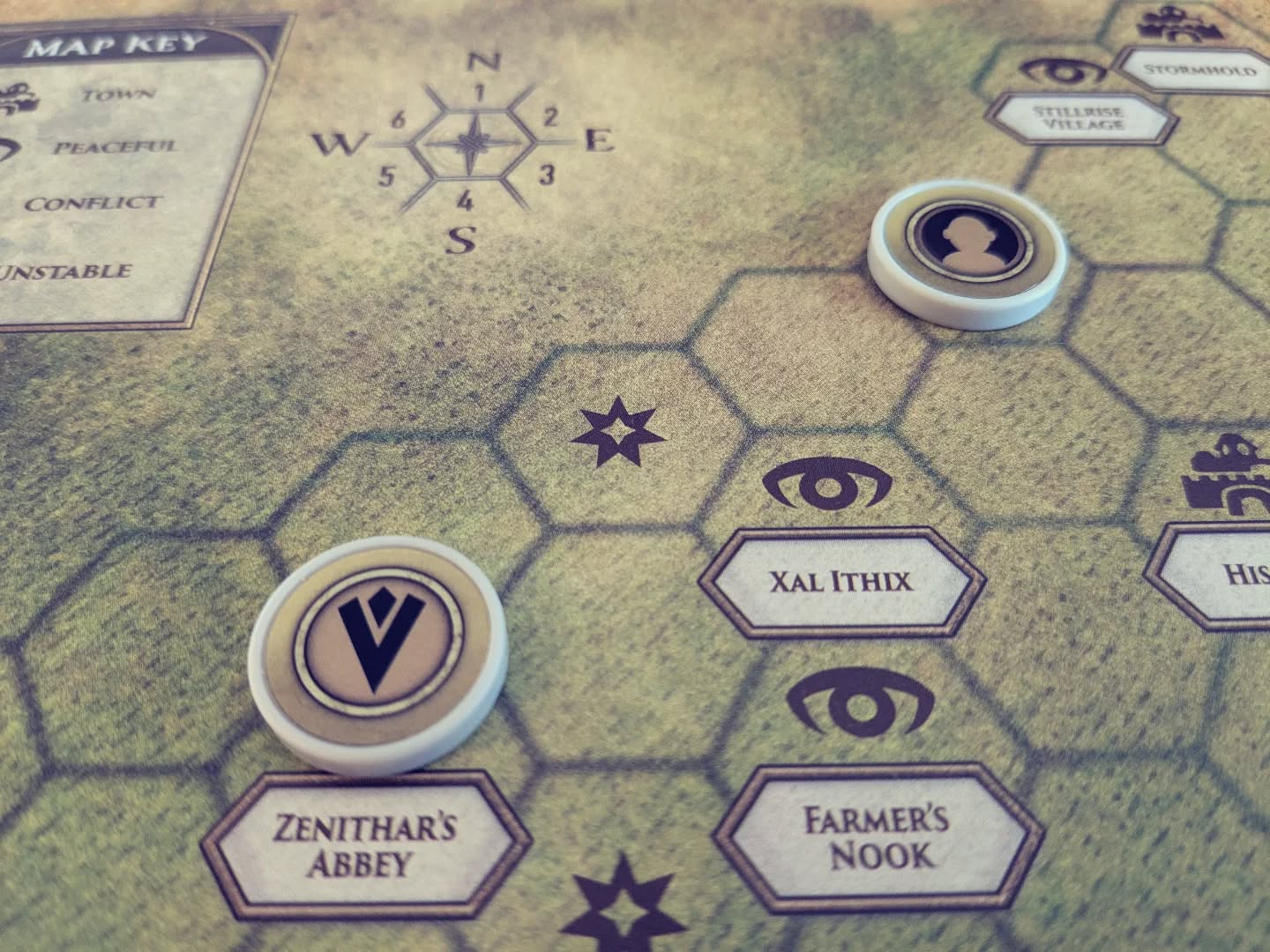
The overland movement makes the game feel expansive and true to The Elder Scrolls series. Each region of Tamriel has a unique overland mini-game to add challenge to your treks. This makes each region feel distinct and memorable. You choose which encounters to engage in and which towns to stop in. The randomized encounters add variability so that no two games in a region are the same, but the towns add a layer of permanence that makes the world feel lived in. For example, I know Stonewastes in Black Marsh is a home to legendary warriors and I can always count on finding an Argonian fighter ready to join my party as a companion on my quest. True to The Elder Scrolls, you may also choose to beeline to your main quest objective or let yourself wander along the way with every villager who needs your help or Dremora who stands in your way.
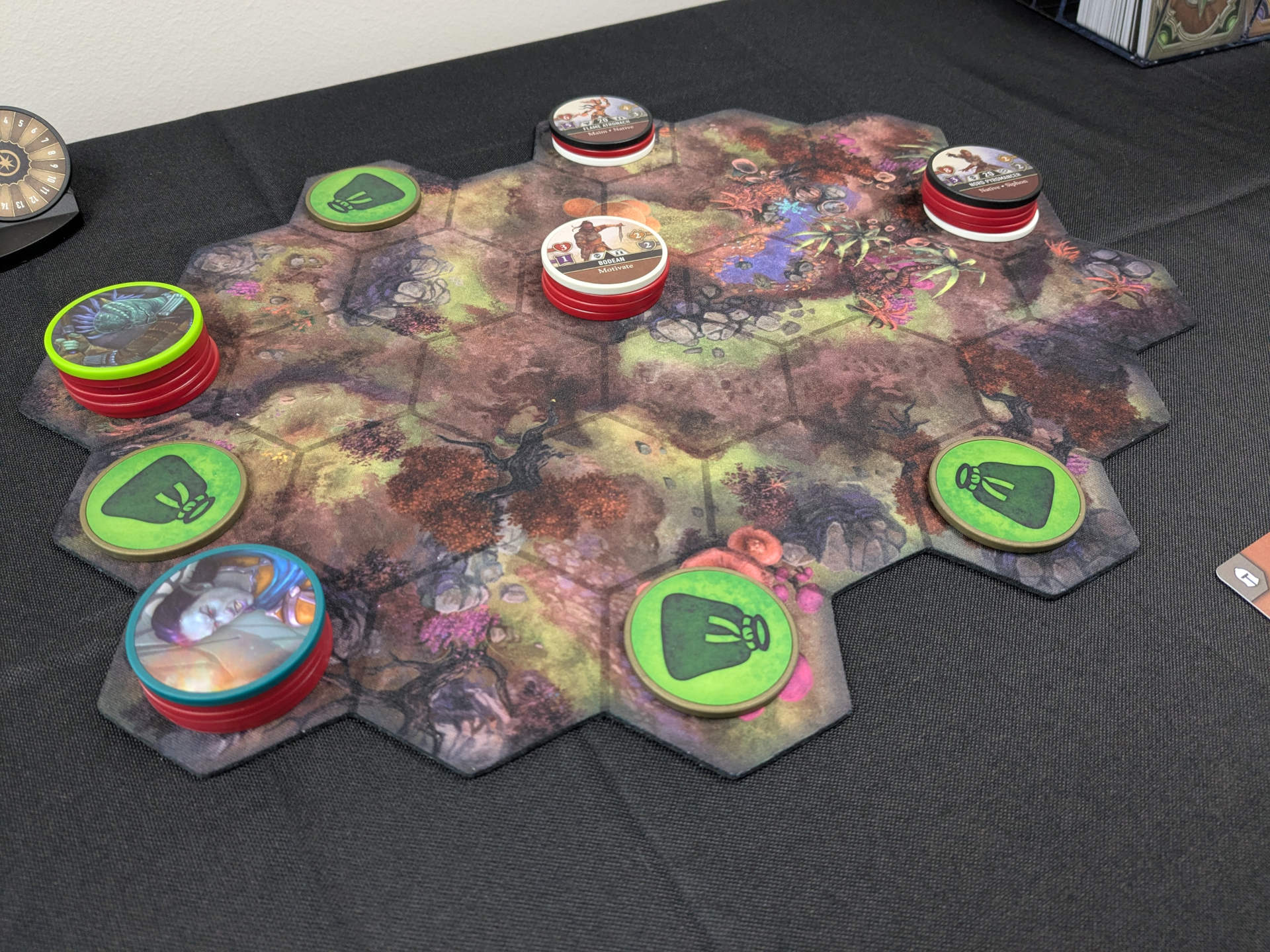
The hex-based battles are fun and strategic. There are different types of battles with different win conditions to keep things fresh, but even if you play the same conflict encounter twice, it can still feel drastically different due to the order and types of enemies you draw from the bag when setting up the encounter. Enemies are uniquely designed with attack types, strengths, and one or more abilities (from dozens of keyword abilities) that make them feel thematic and also influence how you may want to engage them in battle. If an enemy has Necromancy, you may choose to take out that enemy first to not have to contend with resurrected foes each round. Perhaps an enemy with Steal is deployed and you want to keep your distance so that they don’t pilfer the weapons you worked so hard to steal in the first place. One memorable encounter was a clash with a single, tanky enemy where I happened to also randomly draw a formidable Mammoth for that enemy slot. The Mammoth’s Colossal ability gave it even more health. It triggered slight PTSD from getting tossed around by Mammoths and Giants after venturing too far from Whiterun with one of my first under-leveled characters in The Elder Scrolls V: Skyrim, but I managed to pull off the win this time.
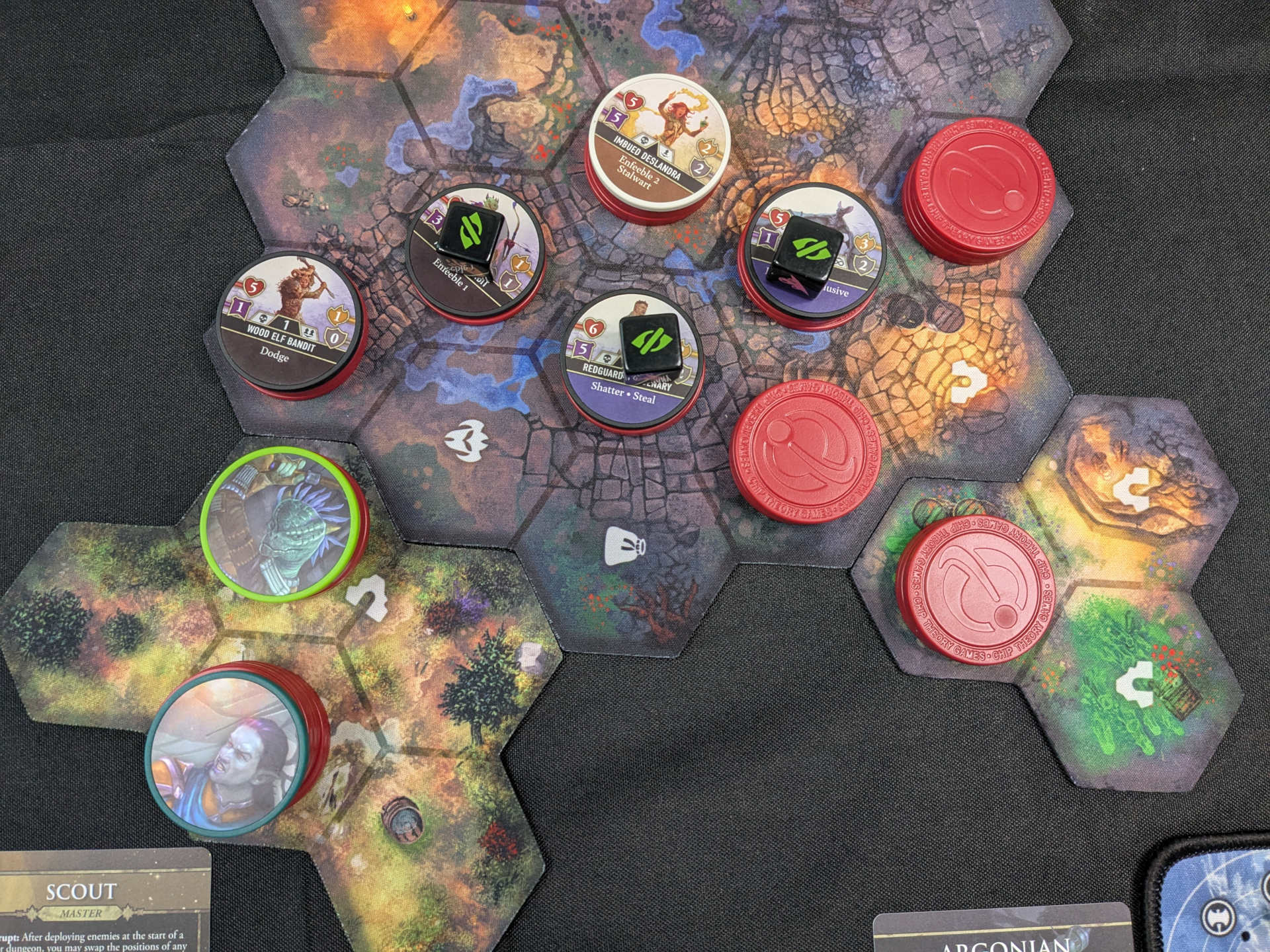
Speaking of the same conflict encounter feeling different, BOTSE has an amazing leveling and enemy scaling system that outshines even its video game siblings. Any encounter can be played at any XP level, but you’ll only run into weaker enemies like Bandits and Skeever Rats until you have the experience to take on harder enemies like Frost Atronachs.
As you can tell, there is a lot of randomness in BOTSE to create unique experiences. I found delves–battles where you’re exploring a cavernous, procedurally generated map–can feel too random. The length of a delve and success is dependent on the draw order from the delve deck. The randomness of the delve deck can be mitigated, but you have to be lucky to find the items that mitigate the delve deck’s randomness. Fortunately, guilds–you align with one at the start of a campaign–specialize in different encounter types so you choose a guild that specializes in encounters you prefer.
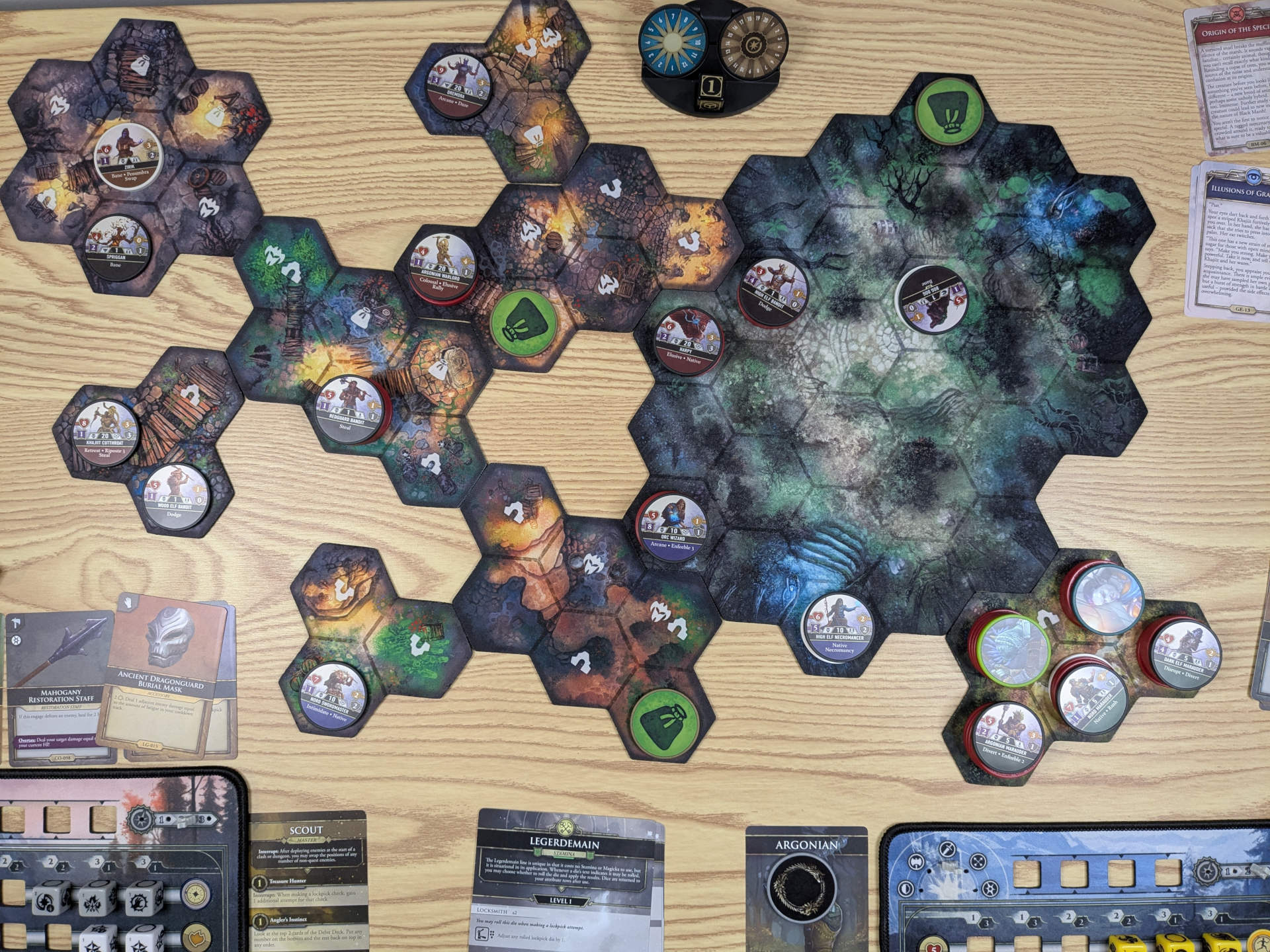
Bad dice rolls or unlucky encounter setups can also be frustrating. Both can slightly be mitigated with some character abilities so you may want to work that into your strategy, but BOTSE also provides other mechanisms to “fail forward” when things don’t go your way. You can run away from encounters or miraculously have your guild bail you out once per campaign if you wipe out. It’s nice that all is not lost when Lady Luck seems to be also facing off against you on the battlefield.
I saved the best for last. The crème de la crème. Character building. The character building is hands down the best part of the game. In true Elder Scrolls fashion, you can develop your adventurer how you want–mixing and matching stats and skill lines with very few constraints. Want an acrobatic, two-handed axeman? Sure! How about a stealthy sorcerer? Yup! I spent a lot of time just theory-crafting the adventurer I would want to play next and a lot of replayability lies in trying out different builds. You have the freedom to mix and match stats (health, magicka, stamina) and skill lines (bow, heavy armor, destruction magic, etc.) and you have room for eight in total on one adventurer. Each skill line can have up to six dice. This sounds like a lot, but when you want to have more than four stats or skill lines, the next skill line has to go on the same row as another stat or skill line and share dice slots. So now, instead of 6 dice for a skill line, all of a sudden you have to prioritize. Should each skill line on a shared row get 3 dice slots each, 2:4 ratio, or 1:5 ratio? It adds a wonderful puzzle to your character building and a welcome constraint that sparks creativity.
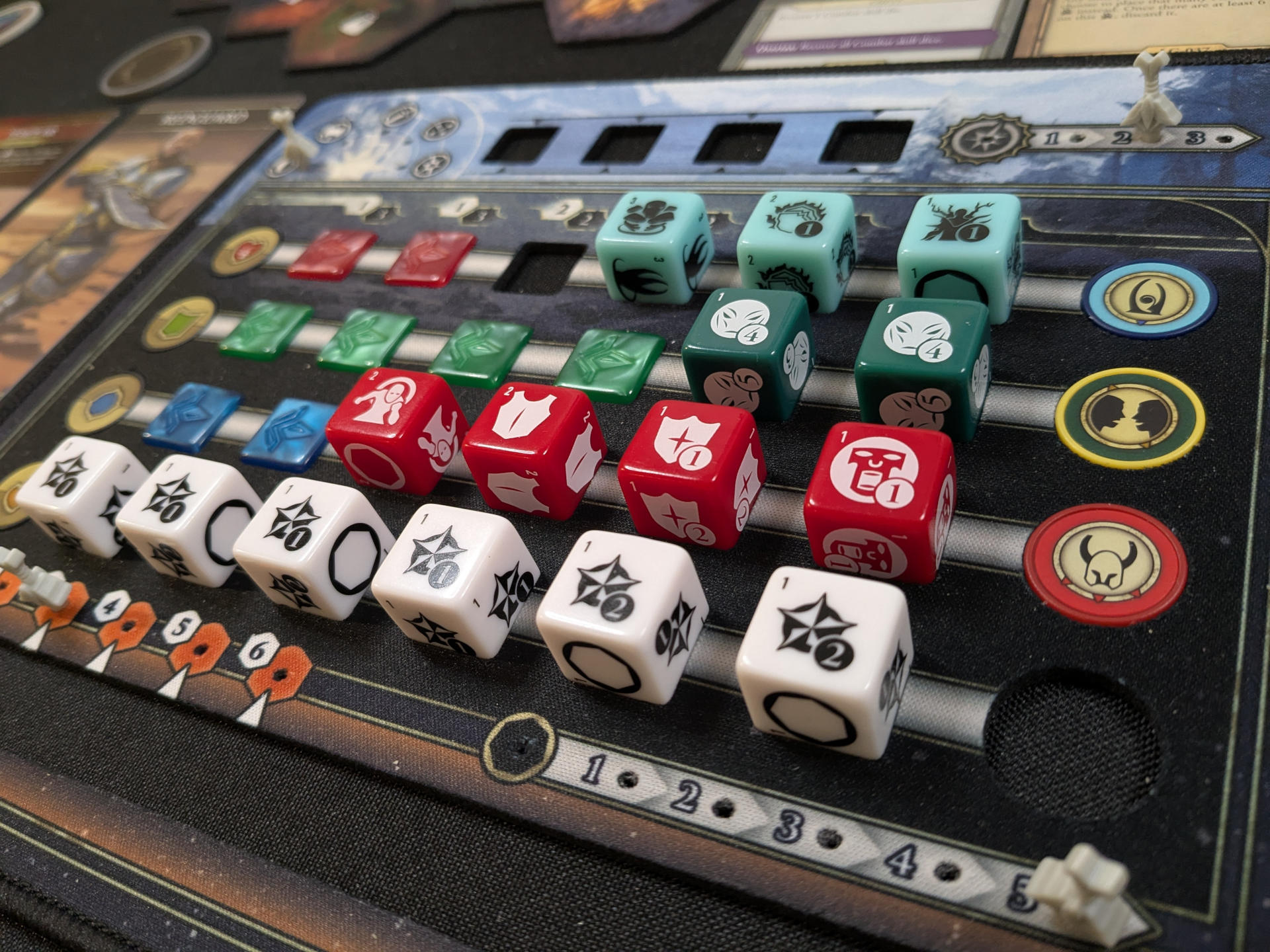
Unfortunately, BOTSE’s biggest strength highlights its biggest weakness which brings us back full circle to the fact that the game sessions are long and as a result make leveling up an adventurer feel like a grind. I found myself taking on certain encounters, not because I wanted to, but because I wanted the XP to progress my character and reach its full potential. The encounters that tend to award more XP are battles–making the game session even longer. Even when I hit my stride, a full campaign with two adventurers took me 8-10 hours. That’s still a long time to stick with your adventurers before resetting and trying new adventurers and other mechanics in a new campaign. It’s also worth noting that about a third to a half of the campaign is spent leveling up to your true final build.
I could see myself modding this game to play what would be an ideal session without the grind. I could set a starting XP allocation (e.g. 25 XP) and fast-level an adventurer by choosing my skill lines and dice according to the XP constraint. I would then play a series of XP-adjusted encounters to put my adventurer to the test. There are more nuances to consider, but it seems like it could work.
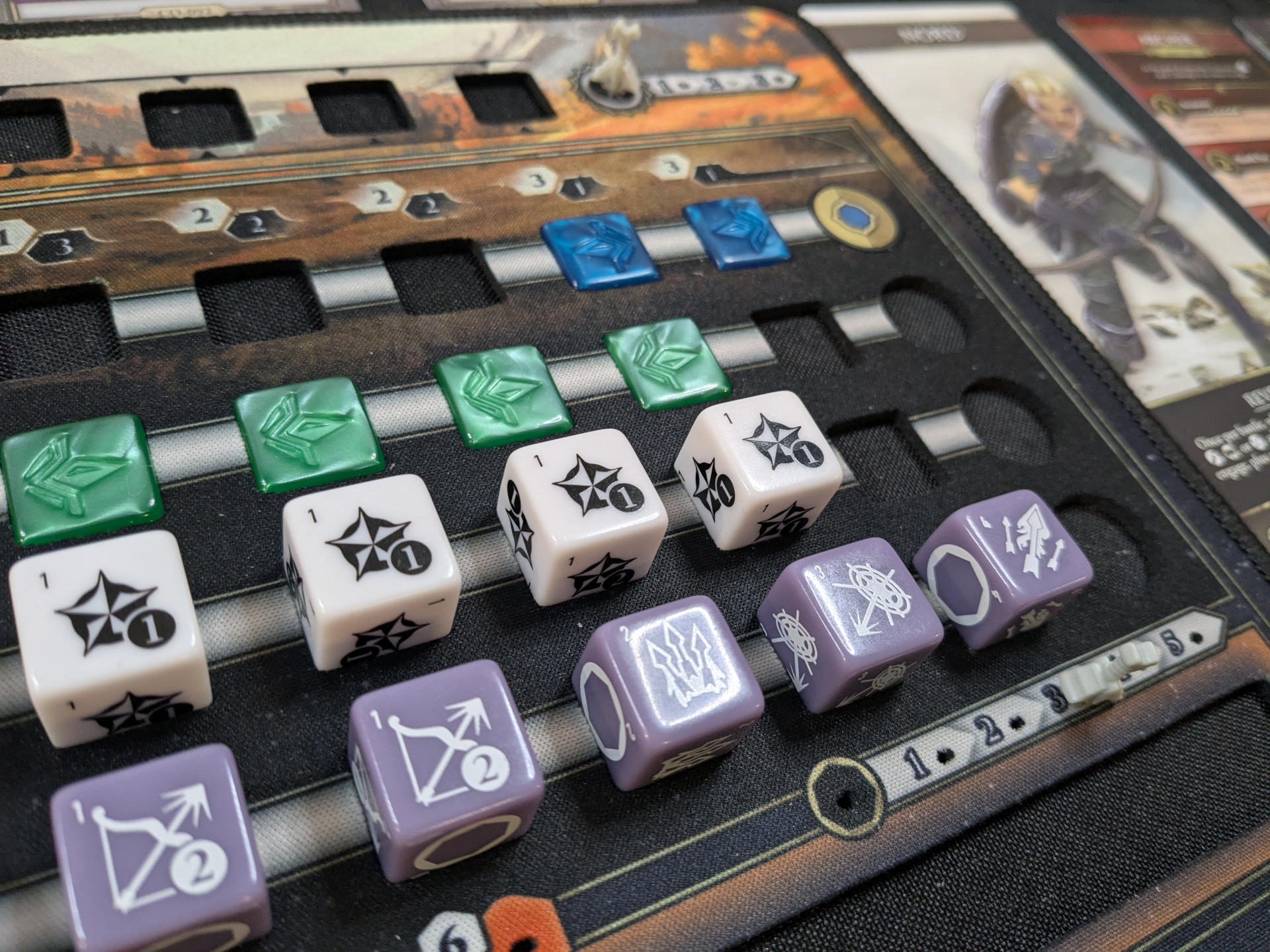
Overall, The Elder Scrolls: Betrayal of the Second Era gameplay is engaging and fun. I enjoyed immersive adventures, varied and exciting tactical battles, and creative and strategic character building choices within a system that may be best-in-class. I think if the developers could have just cut the fat a bit more, it would have brought out the best flavors from the game and made for a more accessible and palatable experience.
Solo Play #
For solo, The Elder Scrolls: Betrayal of the Second Era offers a true solo option where you control one adventurer, but oddly enough solo players are encouraged to control two adventurers during the tutorial. I tried both ways and I found playing with two adventurers was most enjoyable. It allows for more flexibility and creativity in your character builds and the dynamic interplay between adventurers enriches the combat. The battles scale based on the number of adventurers, but you might find some enemy abilities particularly gnarly in true solo if you haven’t prepared for them with a well-rounded build. Playing two adventurers per campaign also means that you get to experiment with and try more character builds per campaign. Either way, BOTSE’s solo mode has plenty to offer, ensuring that even lone wanderers feel right at home in the world of Tamriel.
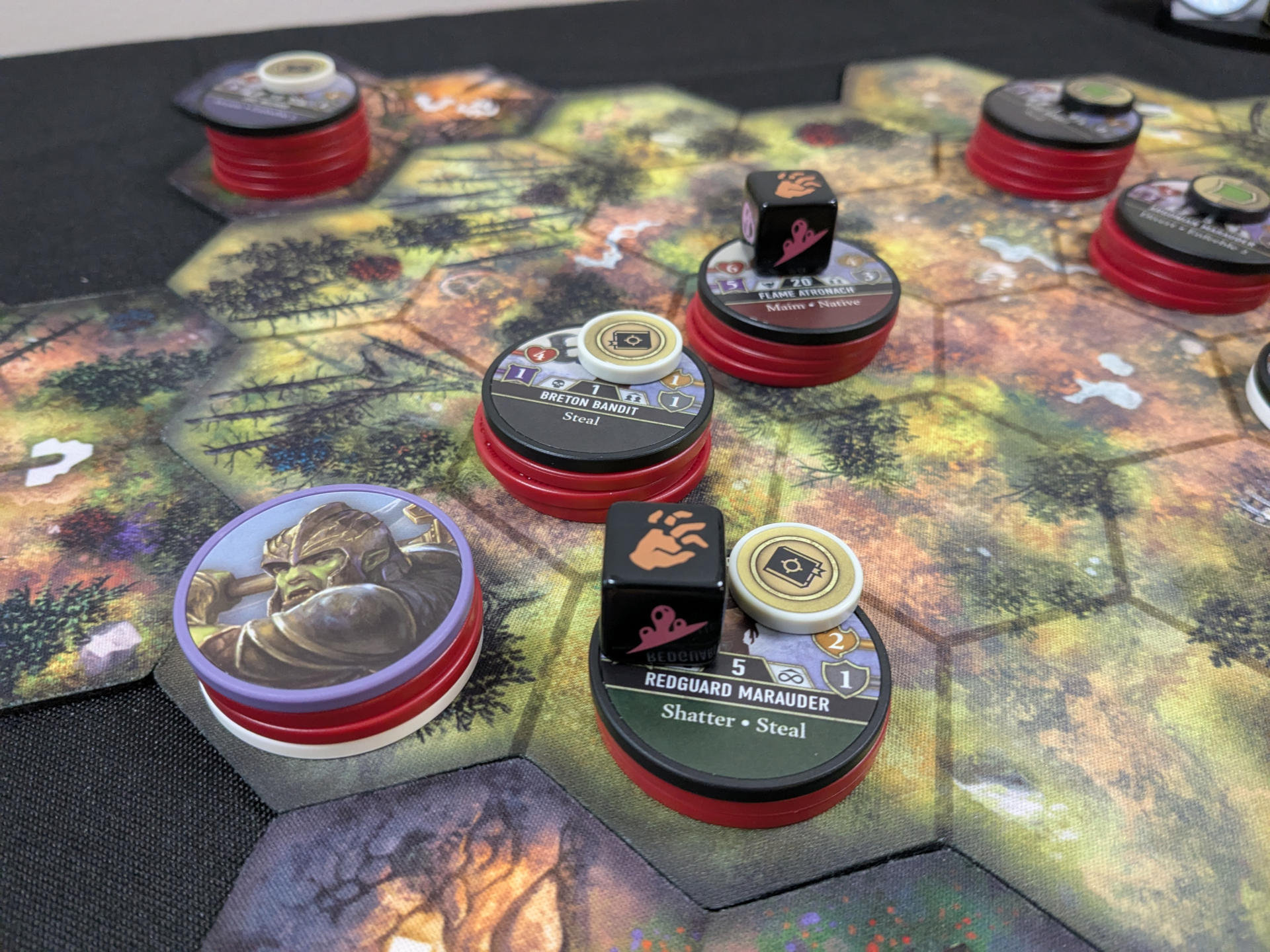
Components and Design #
One of the first things you notice about BOTSE is the premium quality of its components–a true testament to Chip Theory Games’ commitment to excellence. From the diverse, custom skill dice that give your adventurers their identities to the weighty chips that exude a satisfying heft, every element feels thoughtfully designed. The neoprene player mat, a cardholder and organizer for all of the various decks, and storage solutions to save your progress and keep everything neat and tidy come standard here like fancy upgrades on a luxury car. A great deal of care and attention has been poured into the production value of BOTSE, reinforcing its identity as a high-quality, premium experience.
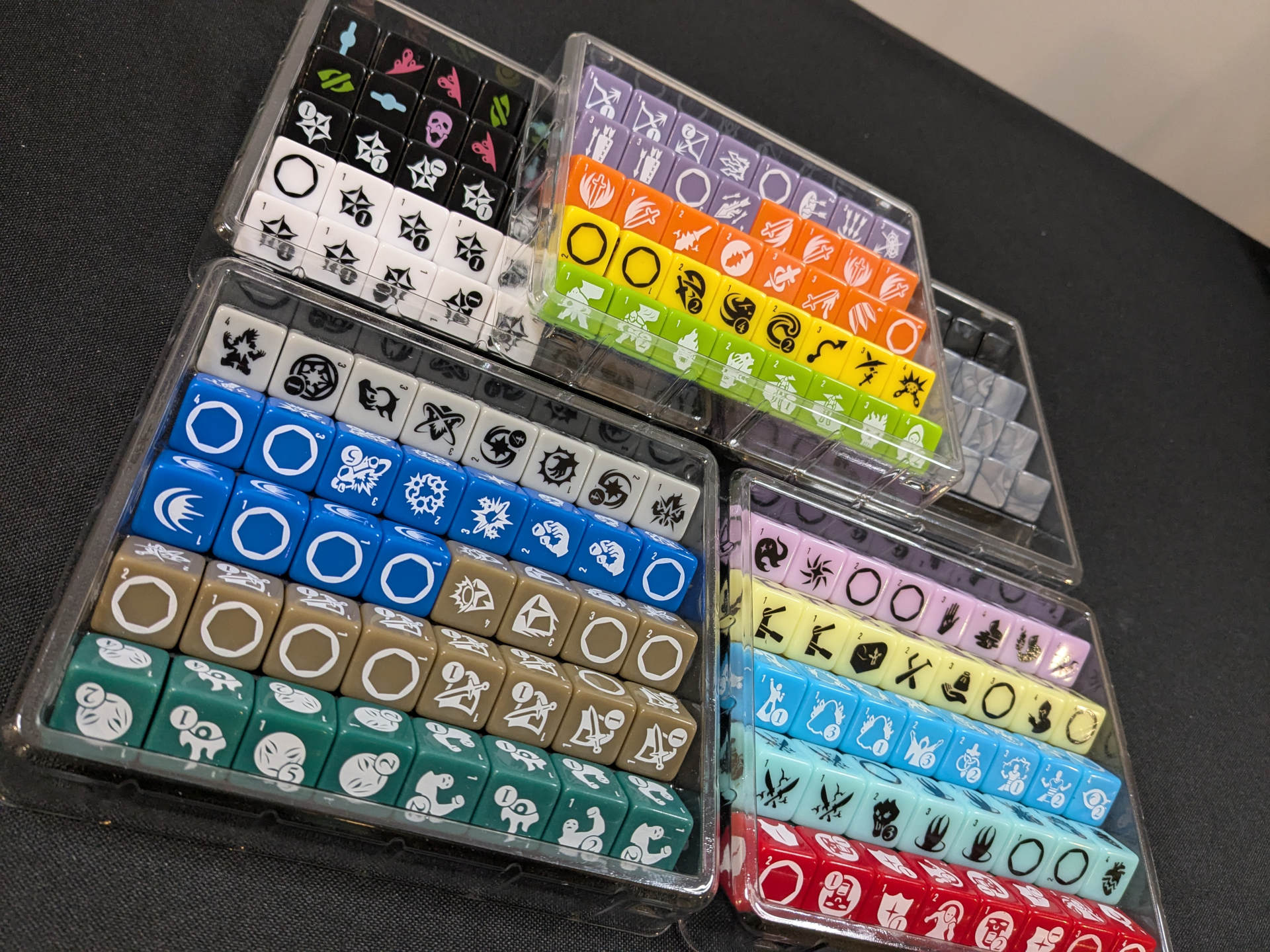
Beyond the components, the writing is on point and the lore is on brand–seamlessly integrating with the broader The Elder Scrolls universe. Traveling across Tamriel, getting sidetracked with random encounters and side quests, training different skill lines, and seeing familiar names and places are all thematic and add to the immersion. If you’re a fan of The Elder Scrolls, you’ll feel right at home.
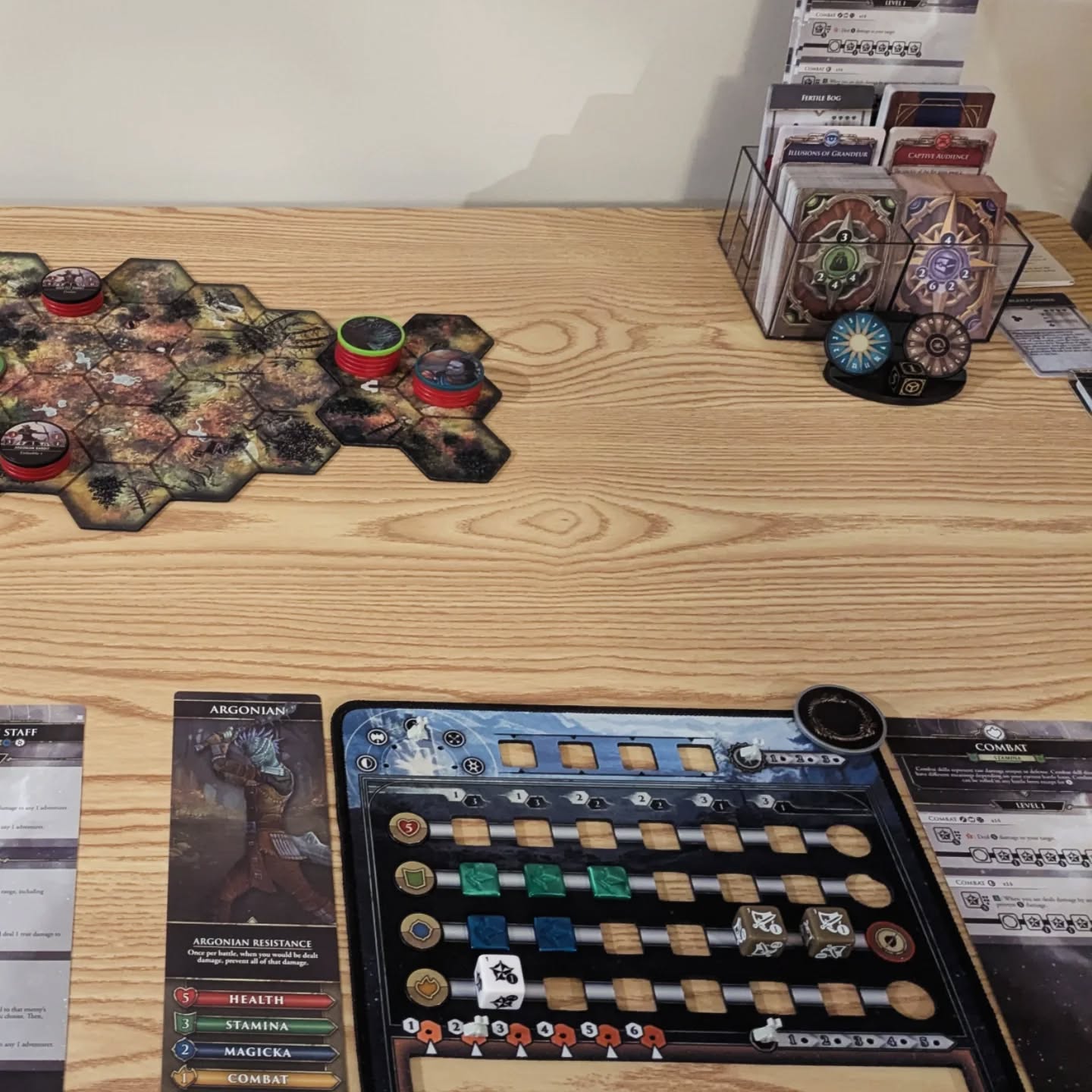
The Second Era setting is compelling and the game’s narrative system–rewriting history with every campaign–is a premise that fits in well with the lore of the Elder Scrolls artifacts. That said, it’s hard not to notice that every campaign features the same antagonist, Deslandra, whose motive–to destroy all magic–remains essentially unchanged across the five campaign arcs in the base game and the Valenwood expansion campaign. While her modus operandi might shift, I can’t help but feel that a bit more variety in villains or storylines would have better showcased the game’s potential for narrative expansion as BOTSE’s three-session writing structure seems like it could handle it.
Final Thoughts #
In the end, The Elder Scrolls: Betrayal of the Second Era is a game that manages to capture the epic, sprawling open-world essence of its video game namesake while delivering a rich and deeply strategic board game experience. Its innovative character building and strategic combat make it a standout title–albeit one that demands patience and a lengthy time commitment from its players. The long sessions and the grindy leveling system mean it’s not a game I’d pull off the shelf lightly. In true The Elder Scrolls fashion, I’m already brainstorming mods to streamline the experience because the character building and core combat are excellent.
We purchased this product independently. All opinions expressed are independent, honest, and unbiased.
- Deep and rich character building with lots of skill lines to mix and match
- Hex-based battles with different encounter types, scaling difficulty, and thematic enemy abilities keep combat fresh and exciting.
- Immersive open-world exploration that successfully captures the feel of The Elder Scrolls series
- Premium materials, custom dice, weighted chips, and excellent storage solutions enhance the overall experience.
- Long game sessions and campaign structure makes leveling up feeling like a chore and takes away from the best parts of the game.
- The rule-heavy experience makes early sessions slow and cumbersome, requiring frequent rulebook references.
- The same villain and overarching motive across multiple campaigns limit narrative variety.
Learn more about how we rate board games...
